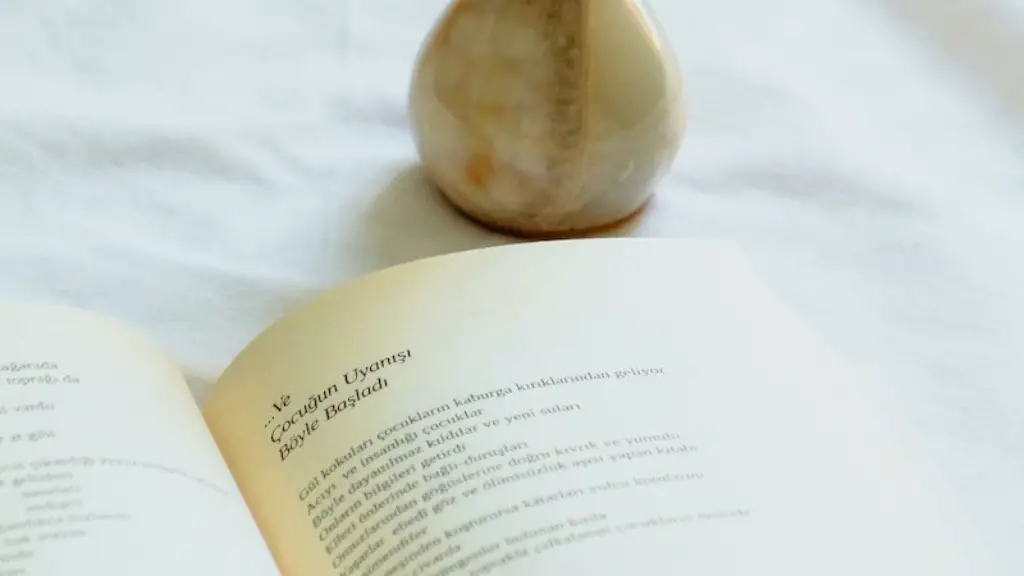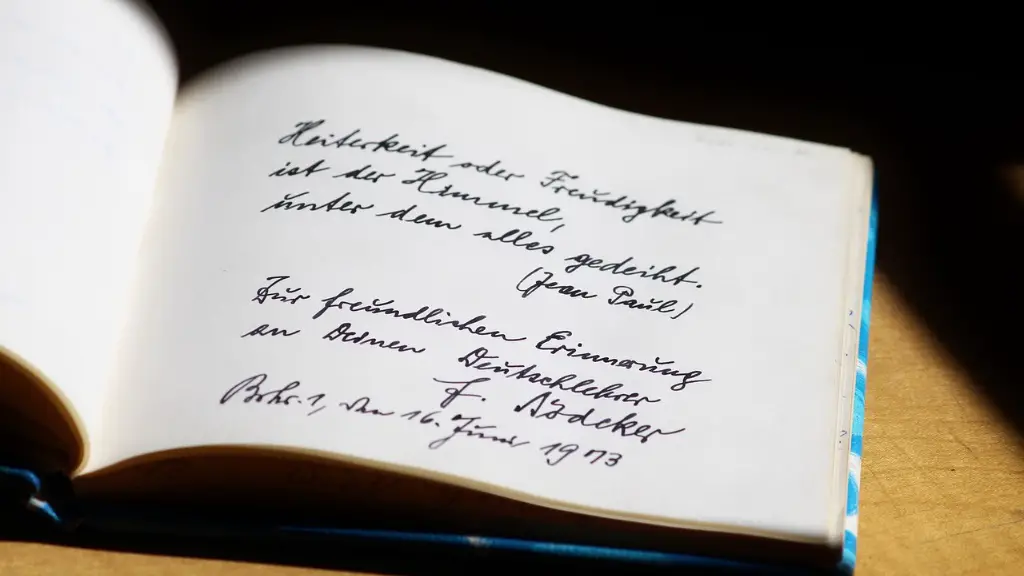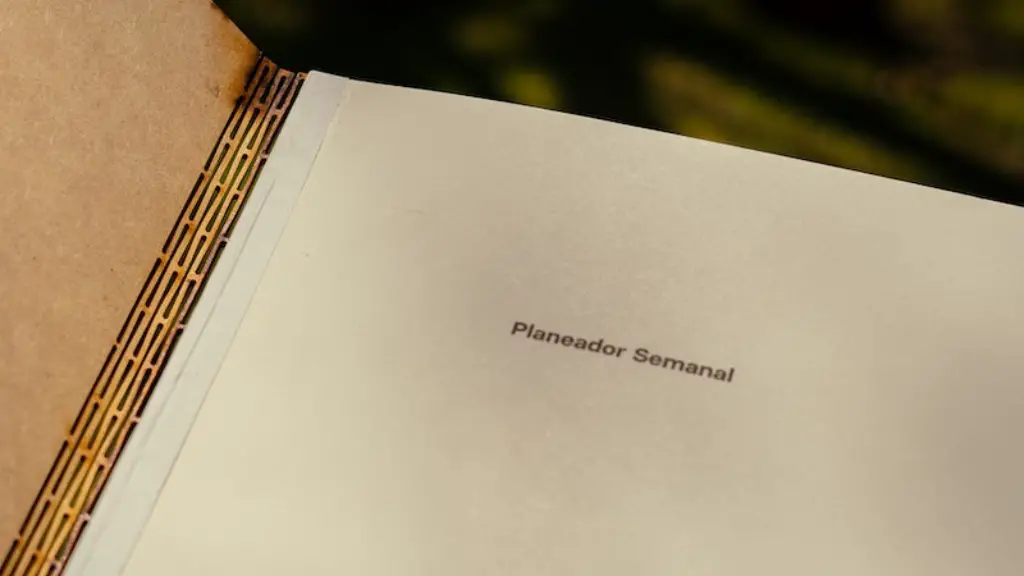Origin of Refrain Poetry
Refrain poetry has been around for centuries, originating from oral traditions in African and Middle Eastern cultures. Refrain poetry was passed on from generation to generation in the form of spoken word. It was used to celebrate special events or moments, to remember histories and stories or for entertainment. Refrain poetry also has religious and spiritual connotations, as it was often used to praise deities in sacred rituals. In Europe, it was popularized in the 16th and 17th centuries when songwriters began to employ refrains in their songs as a way to create catchy tunes.
What Is A Refrain Poem?
A refrain poem is a poem that includes sections of repeated words or phrases. The main theme of the poem is often repeated in each stanza and the refrain serves to emphasize the central message of the poem. Refrain poetry profoundly affects the reader and has the power to invoke strong emotions. This makes it a powerful form of expression that can be used to convey a wide range of messages, from joy to sorrow to anger. The use of refrains also adds a musical element to the poem, as the refrain creates a regular rhythm and structure.
Examples of Refrain Poetry
A well-known example of refrain poetry is T.S. Eliot’s “The Hollow Men.” In this poem, the phrase “shape without form, shade without color” is repeated multiple times to hammer home the ultimate sense of emptiness felt by the persona. Walt Whitman’s “Out of the Cradle Endlessly Rocking” is another renowned example of refrain poetry. In this poem, the saying “never to dream of human bliss” is used to emphasize the disillusionment the persona is feeling.
Benefits of Refrain Poetry
Refrain poetry is particularly effective in conveying an emotional message as the repeated phrase binds the entire poem together and adds an extra dimension to the poem. Moreover, the use of refrains enables the reader to follow the main story as repetition of the same phrase helps emphasize the main message and create unity within the poem.
Using Refrain Poetry Effectively
Using refrain poetry effectively requires a keen understanding of the desired effect and how to achieve it. For example, to create a melancholic mood within the poem, a slower and deliberative refrain should be chosen. On the other hand, to emphasize enthusiasm or joy within a poem, a more upbeat refrain should be chosen. Furthermore, the number of times the refrain is repeated should also be taken into account when constructing a poem as too much repetition may make the poem appear monotonous.
Forms of Refrain Poetry
Refrain poetry appears in many different forms, often depending on the culture in which it originated. For example, traditional African poetic forms often employ repeated verses, while in the West, refrain is more commonly used in lyrics and other musical forms. Another form of refrain poetry is the sonnet, which typically follows the structure of an AABB rhyme scheme where the first two lines of each stanza are the same.
The Impact of Refrain Poetry
Refrain poetry has a profound impact on the reader as it not only conveys the main story in a concise manner but also creates an emotional bond between the poem and the reader. This impact can be particularly powerful when the poem is related to a personal experience or event. The impact of refrain poetry can also extend beyond the reader to the wider community, as it can serve as a form of communication between people from different backgrounds and life experiences.
Creating Refrain Poetry
Creating refrain poetry requires some practice and knowledge of the genre. To do so, it’s best to start with a subject that resonates with you and allow the overall mood of the poem to inform the selection of refrains. Experiment with different refrains to discover the right one that conveys the intended message. It’s also important to consider the rhythm and structure of the poem and how the refrain interacts with the other words and phrases within the poem.
Discovering Refrain Poetry
Discovering refrain poetry can be done in many different ways. Start by familiarizing yourself with the wide range of poems, from traditional ones to modern compositions. Reading the works of renowned poets, such as Walt Whitman and T. S. Eliot, can also be enlightening, as their expertise in this genre can be inspirational. If you’re looking for something more contemporary, exploring music and rap lyrics can be insightful as many of today’s musicians are using refrain in their works.
Contemporary Refrain Poetry
Contemporary refrain poetry has expanded far beyond its origins. Now, instead of relying on traditional language, writers are creating new forms of refrain that incorporate slang and other idiomatic expressions. As a result, poems are becoming more accessible and meaningful to a wider audience. Contemporary artists have pushed the boundaries of the genre by experimenting with unique and innovative forms of repetition. For example, rapper Kendrick Lamar’s song “Alright” contains a repeating chorus that is used to emphasize the message of resilience.
Interpretive Refrain Poetry
Interpretive refrain poetry engages the reader in a dialogue as it encourages the reader to reflect and consider the meaning of the poem. By incorporating multiple interpretations of the same refrain, writers can explore themes in a multitude of ways. Furthermore, this type of refrain poetry is particularly suited for expressing personal feelings and experiences. For example, in the poem “Behold the Sea” by Maggie Smith, the phrase “I will remember” is repeated multiple times throughout the poem, providing comfort and hope to the persona in a time of uncertainty.
The Legacy of Refrain Poetry
The legacy of refrain poetry has endured through generations, with its main features remaining intact. Its power to persuade, to evoke emotion and to create a bond between its readers continues to be celebrated. It has also become a form of expression for a wide array of cultures, with new variations and interpretations added as its popularity has spread. Whether it’s a traditional poem, a rap song, or a modern poem, refrain poetry will undoubtedly leave its mark on generations to come.



